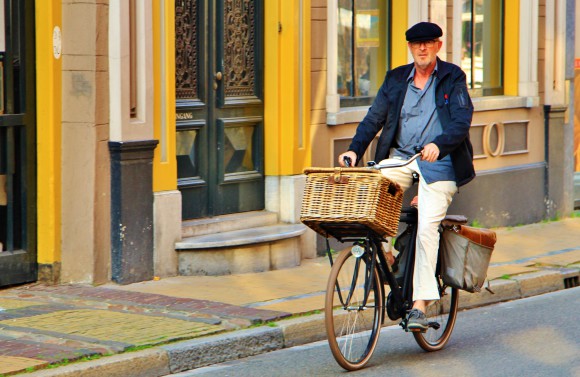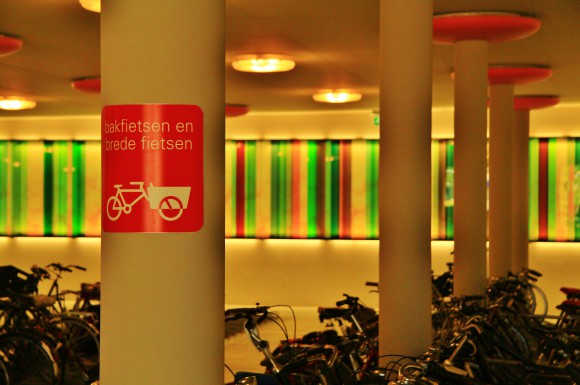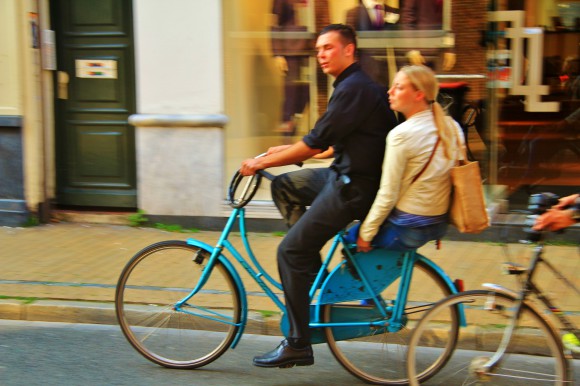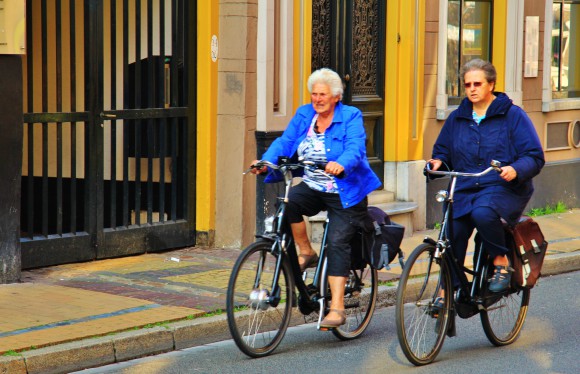
City visit Groningen: the historical path of the best cycling city in the Netherlands
For anyone who thinks that the Dutch bicycle culture has always been there and is impossible to replicate, read this story about the path Groningen followed, paving the way for a 60% modal share in cycling.
In the 60s and 70s, the northern Dutch city of Groningen (200,000 inhabitants) had to deal with a growing number of cars and cycling was seriously threatened. The local government took some key measures to prevent the car from taking over the city:
Step 1: 1977 announced the Traffic Circulation Plan for Groningen. A moderate name for a radical plan, meaning that cars and other motorized traffic would mainly circulate around the city centre and no longer in it. History is repeating itself and as we speak, many cities are now taking the path Groningen took 40 years ago. Citizen movements are asking for more reduced traffic areas and the momentum is clearly there, so what are you waiting for?
Step 2: At the same time, continuous investments in good(looking) bicycle infrastructure were made. For the period of 2014-2018 Groningen has reserved 2 million euro per year for investments in cycling (excluding cycling budgets in other big infrastructure projects). These investments get full political support from all parties. As current vice-mayor of Traffic and Transportation Paul De Rook says: “the bicycle is at the same time the most liberal and the most social transport mode.”
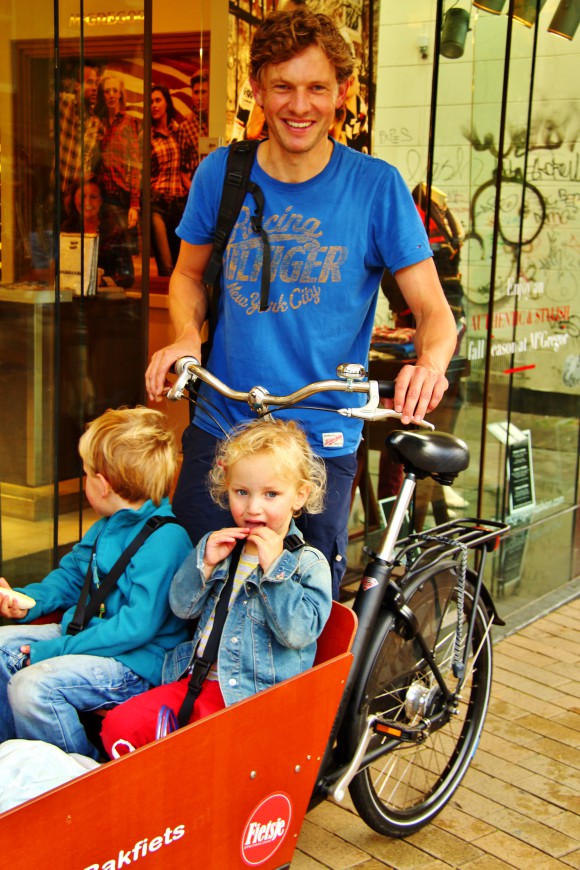 Step 3: Thoughtful urban planning formed the base of the Compact City model Groningen has followed ever since. It prevents urban sprawl and assures the continual efficiency that a city naturally has. Groningen works according to the principle of minimisation of biking distances: don’t build any new residential, shopping or office locations beyond the reach of a bicycle. There has also recently been an integration of the administrative services of urban planning, traffic and environment.
Step 3: Thoughtful urban planning formed the base of the Compact City model Groningen has followed ever since. It prevents urban sprawl and assures the continual efficiency that a city naturally has. Groningen works according to the principle of minimisation of biking distances: don’t build any new residential, shopping or office locations beyond the reach of a bicycle. There has also recently been an integration of the administrative services of urban planning, traffic and environment.
Most European cities have a compact core like Groningen and sometimes say there is not enough space for all the road users. Make a long-term positive choice, like Groningen did and give priority to active transport modes. As for urban planning, even today there are possibilities to re-use forgotten inner city spaces and make the best use of the limited city space. Cities can also still chose not to allow shopping centres that are not within cycling distance.
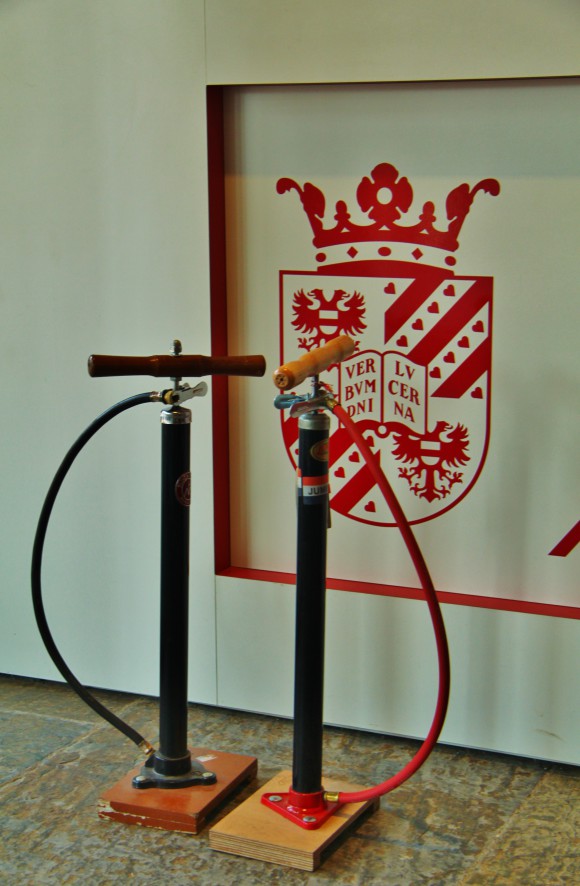 Step 4: Groningen is a city of experiments: for example the all-directions-green-light for cyclists at crossroads and the rainy-weather-green-light-for-cyclists-sensor have resulted in less cyclists riding through red lights and the number of deadly accidents caused by trucks’ or cars’ blind spots has dropped to zero.
Step 4: Groningen is a city of experiments: for example the all-directions-green-light for cyclists at crossroads and the rainy-weather-green-light-for-cyclists-sensor have resulted in less cyclists riding through red lights and the number of deadly accidents caused by trucks’ or cars’ blind spots has dropped to zero.
Collaboration with the city’s university, where several researchers study the behaviour of every-day cyclists, and local cycling advocacy association Fietsersbond, can help to put these experiments into place or give feedback.
Resumé of the lessons learnt (4 steps to reach Groningen’s 60% of modal share in cycling)
- Don’t hesitate to ban motorized transport from city centres, and give priority to active modes. The time is now!
- Invest in good cycling infrastructure (both lanes and parking) to encourage a blossoming cycling culture of citizens of all ages.
- Keep your city compact and check if new residential, shopping or work locations live up to the basic principle of minimisation of cycling distances.
- Get in touch with your city’s university and cycling association for more knowledge, testing, experiments or scientific-based proof. Create fast and unbureaucratic procedures for authorising on-the-ground studies and pilot projects and use research results in your cycling policy.
Some of the challenges Groningen is facing
- Keeping the focus on cycling: the vice-mayor, the bicycle manager and even city engineers have regular meetings with the active Fietsersbond members. The local advocacy association finds it very useful and wishes to keep this up.
- The rebuilding of the road around the city (Ringweg Zuid) might create more barriers for cyclists wanting to get into the city.
- Cycling congestion (parking & riding): Groningen is doing its best to keep ahead of growing cyclist numbers and sometimes have to be quite severe to keep bicycle parking within the foreseen infrastructure.
- Marketing? Is it Dutch modesty that Groningen is not widely known in the world of cycling? Is cycling just too natural there for them to boast about it? Groningen wants to become a major player in the field of cycling cities and indeed they should for there is a lot to learn from their steadily growing bicycle culture.
Regions:
- Log in to post comments
Contact the author
Recent news!
Upcoming events
Contact Us
Avenue des Arts, 7-8
Postal address: Rue de la Charité, 22
1210 Brussels, Belgium

